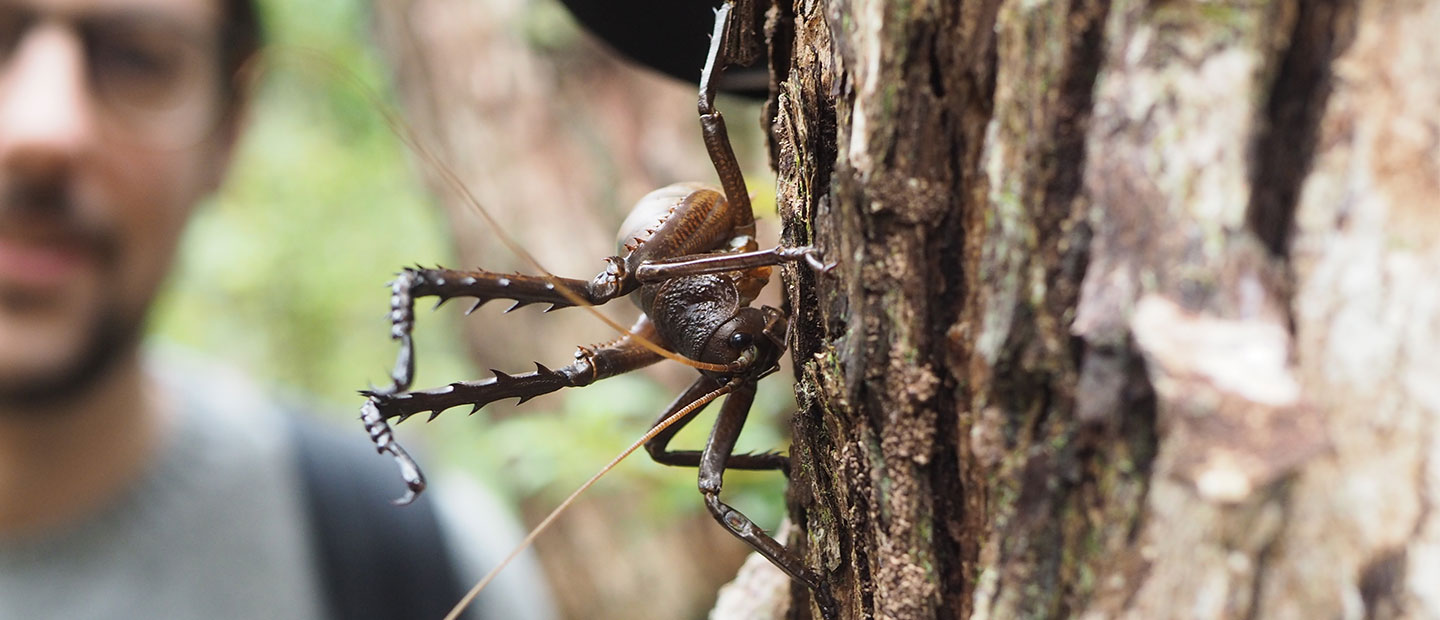Under a full moon and clear skies on an unseasonably warm evening in late June, I am hiking across Otata Island in The Noises, just 25km, but worlds away, from downtown Auckland.
I am here with Auckland Zoo's Ectotherms team leader Don McFarlane, his teammate Seth Garden and The Noises' Rod Neureuter to release 106 of one the world’s heaviest and most spectacular insects, our largest endemic giant wētā - the nocturnal wētā punga.
The Noises have been privately owned by passionate conservationists the Neureuter family, since 1933. They are predator-free, and with the exception of Rangitoto, feature the best indigenous cover of all the inner Hauraki Gulf islands.
Otata (15 ha), the largest, supports a rich diversity of wildlife, marine and terrestrial - from grey-faced petrels that burrow all over the island, to little penguins, native geckos and the largest, plumpest and loudest tui population ever to be seen or heard. This spectacularly loud Otata tui choir broadcasts through the bush until it's almost dark and time to release our wētā punga!
For this evening's release, Rod leads the way. In backpacks, Don and Seth transport their precious three to five-month-old charges (a safe release age), caught up and carefully packed into paper-padded plastic containers at 6am at Auckland Zoo's wētā punga breeding facility.


